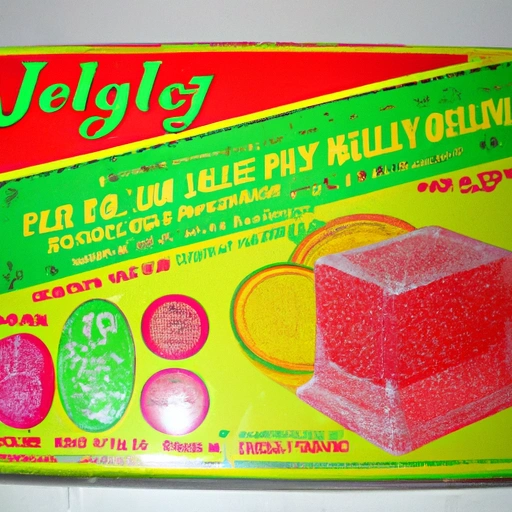Jell-O
Description

Jell-O is a well-known brand name for a variety of gelatin desserts, including fruit gels and pudding. Known for its wobbly and slightly translucent appearance, it comes in a rainbow of colors and flavors, from raspberry to lime. The powder, when mixed with boiling water, and sometimes combined with cold water or ice, dissolves and, upon cooling, sets into a gel-like consistency. This process is due to the presence of gelatin, which is a protein derived from collagen, a natural component of animal bones and connective tissue.
Measurements for preparing Jell-O typically involve cups (8 oz in American units, about 240 mL in metric), tablespoons (about 15 mL), and teaspoons (about 5 mL), catering to both American and European cooks familiar with these units.
Common uses
Jell-O is widely used as a dessert on its own or in various recipes. It serves as a base for jellied salads, fruit-flavored layers in cakes, and as a colorful addition to trifles and parfaits. It is also a popular ingredient in no-bake desserts and can be molded into different shapes, making it a favorite for themed parties and holiday events.
Nutritional value
Calories
A typical serving of Jell-O, which is about 1/2 cup (120 mL), contains approximately 70-80 calories.
Protein
Jell-O contains about 1-2 grams of protein per serving, derived from the gelatin.
Fat
Jell-O is virtually fat-free, with less than 0.5 grams of fat per serving.
Carbohydrates
Most of the calories in Jell-O come from carbohydrates, primarily in the form of sugars, with roughly 18-20 grams per serving.
Vitamins
While Jell-O is not a significant source of vitamins, fortified versions may contain added Vitamin C and Vitamin A.
Minerals
It is not rich in minerals, but gelatin can contain small amounts of minerals from the bones and tissues used in its production.
Health benefits
As a low-fat dessert option, Jell-O can fit into a weight management diet when consumed in moderation. The gelatin in Jell-O may contribute to joint health and has been claimed to improve skin and hair quality, though more research is needed.
Potential risks
The high sugar content in regular Jell-O can be a concern for individuals managing blood sugar levels or those looking to reduce caloric intake. Sugar-free options are available but often contain artificial sweeteners that some people prefer to avoid.
Common recipes
Jell-O is used in a variety of recipes, including molded desserts, Jell-O shots, fruit salads, and as a thickener for no-bake cheesecakes and pies.
Cooking methods
The basic method for preparing Jell-O involves dissolving the powder in boiling water (about 1 to 2 cups, or 240 to 480 mL), then adding cold water or ice before allowing it to set in the refrigerator.
Pairing with other ingredients
Jell-O pairs well with whipped cream, fresh fruits, marshmallows, and even incorporates into savory dishes like retro congealed salads.
Summary
Jell-O is a versatile, easy-to-make dessert product that has been part of culinary traditions for over a century. With a variety of flavors and applications, it provides a simple yet creative outlet for desserts and snacks. Whether valued for its nostalgic feel or its role in quick and easy recipes, Jell-O continues to be a staple in both American households and those around the world.